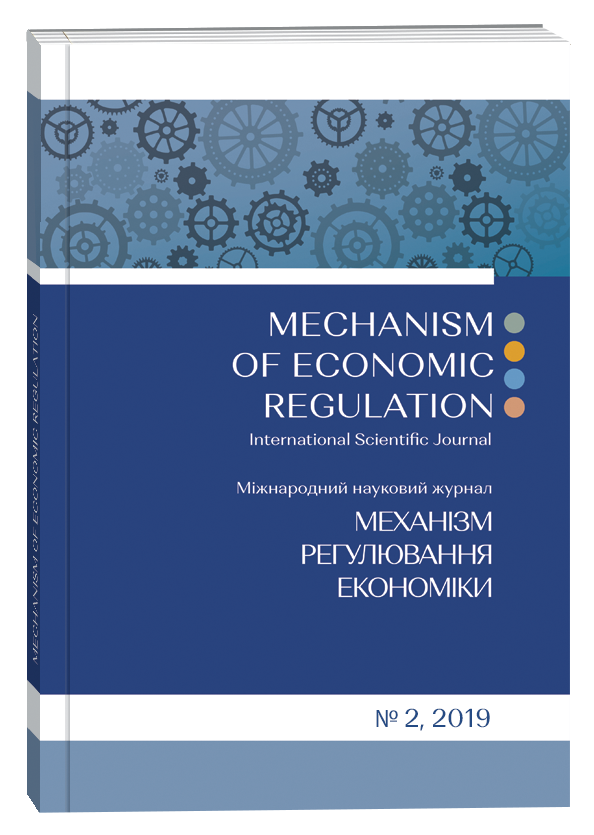PAYMENT FOR ECOSYSTEM SERVICES IN UKRAINE: PRIORITY DIRECTION OF REVITALIZATION
Abstract
The authors of the article are involved in the actualization of the informational and educational campaign on the value of ecosystem services and their assessment in Ukraine. The content of the economic category of public welfare through the prism of ecosystem services, approaches to their classification, assessment and payments are researched. The results of the informational and educational campaign on the value of ecosystem services of Ukraine and the further application of assessment of such services as one of the priority strategic tasks of the country’s environmental policy are analyzed. The terminological, environmental protection and climatic context of state policy in the area of forest ecosystem services in Ukraine is highlighted. It is substantiated that the intensity of nature uses, in particular the use of land resources, forms space in different ways and affects the vulnerability of ecosystems and their stability. It is proved that ecosystem services and land use are directly related, since the intensity of the latter, which causes the formation of spatial transformations, is determined by qualitative and quantitative indicators. Three levels of land use intensity (low, medium, high), which determine changes in the spectrum and quality of ecosystem services are investigated. An economic assessment of ecosystem services in Ukraine are conducted in terms of areas for the following types of land use: agricultural (arable and pasture land), forest and land under bogs. The grouping of regions according to the level of ecosystem transformation and intensity of land use is done. The results of such grouping indicate that the current state of land use governance requires a revision of the existing artificial, unified governance approach. In the future, the activation of the instrument – payment for ecosystem services will increase the level of capitalization and investment attractiveness of both natural assets in general and of land economic assets in particular.
References
Деякі питання використання коштів, передбачених у державному бюджеті за програмою 2401270 «Здійснення природоохоронних заходів» на 2017 рік: Постанова Кабінету Міністрів України від 4 липня 2017 р. № 473 [Електродний ресурс]. – Режим доступу : http://zakon.rada.gov.ua/laws/show/473-2017-%D0%BF. (Актуально на 18.12.2018).
Деякі питання використання коштів, передбачених у державному бюджеті за програмою 2401270 «Здійснення природоохоронних заходів» на 2018 рік: Постанова Кабінету Міністрів України від 18 квітня 2018 р. № 361 [Електродний ресурс]. – Режим доступу : http://zakon.rada.gov.ua/laws/show/361-2018-%D0%BF. (Актуально на 18.12.2018).
Лісовий кодекс України від 21.01.1994 № 3852-XII; в редакції Закону від 08.02.2006 № 3404-IV [Електродний ресурс]. – Режим доступу : http://zakon.rada.gov.ua/laws/show/3852- 12. (Актуально на 27.12.2018).
Про затвердження Національного плану дій з охорони навколишнього природного середовища на 2011–2015 роки: розпорядження Кабінету Міністрів України від 25 травня 2011 року № 577-р VІ [Електродний ресурс]. – Режим доступу : http://zakon.rada.gov.ua/la- ws/show/577-2011-%D1%80. (Актуально на 18.12.2018).
Про Основні засади (стратегію) державної екологічної політики України на період до 2020 року: Закон України від 21.12.2010 року № 2818-VІ [Електродний ресурс]. – Режим доступу : http://zakon.rada.gov.ua/laws/show/2818-17. (Актуально на 18.12.2018).
Агробіорізноманіття України: теорія, методологія, індикатори, приклади: у 2 книгах. – К. : ЗАТ «Нічлава», 2005. – Книга 2. – 592 с.
Бобылев, С. Н. Экосистемные услуги и экономика / С. Н. Бобылев, В. М. Захаров. – М. : ООО «Типография ЛЕВКО», Институт устойчивого развития / Центр экологической политики России, 2009. – 72 с.
Мішенін, Є. В. Економіка екосистемних послуг: теоретико-методологічні основи / Є. В. Мішенін, Н. В. Дегтярь // Маркетинг і менеджмент інновацій. – 2015. – № 2. – С. 243–257.
Соловій, І. П. Концепція плати за послуги екосистем: світовий досвід і перспективи її впровадження у лісовому секторі [Електродний ресурс] / І. П. Соловій. – Режим доступу : http://nbuv.gov.ua/UJRN/Nplanu_2016_14_38. (Актуально на 03.12.2018).
Analysis of 19 Ecosystem Service Assessments for Different Purposes – Insights from Practical Experience / A. Berghöfer, A. Wittich, H. Wittmer et al. – Helmholtz Zentrum für Umweltforschung (UFZ) GmbH, Leipzig, and Deutsche Gesellschaft für Internationale Zusammenarbeit (GIZ) GmbH, Eschborn, 2015. – 27 p.
Costanza, R. Valuing Ecosystem Services with Efficiency, Fairness and Sustainability as Goals / R. Costanza, C. Folke // Nature’s Services: Societal Dependence on Natural Ecosystems. Island Press, Washington, DC, 1997. – Р. 49–70.
Ecosystems and Human Well-being: a Framework for Assessment / Millennium Ecosystem Assessment [Electronic resource]. – Accessed mode : https://millenniumassessment.org/documents/MA_A%20framework%20for%20Assessment_RUS.pdf. (Available at 23.11.2018).
The Value of the World’s Ecosystem Services and Natural Capital [Electronic resource] / R. Constanza, R. d’Arge, R. de Groot et al. // Nature. – 1997. – No 387(6630). – Accessed mode : https://www.biodiversity.ru/programs/ecoservices/library/common/doc/Costanza_1997.pdf. (Available at 23.11.2018).


